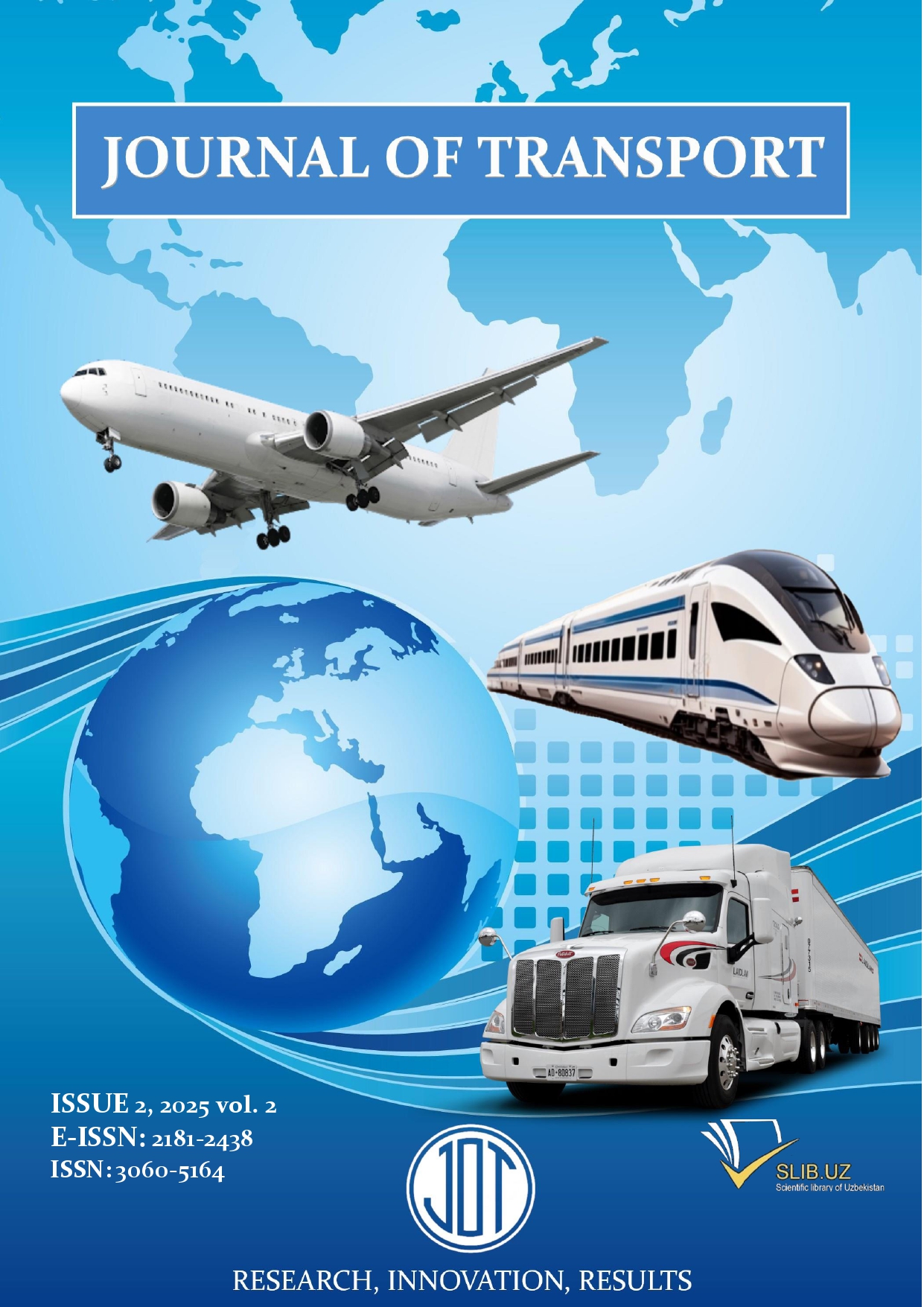Improving models for ensuring the regularity of city bus traffic
Abstract
The article presents a mathematical model for optimizing the regularity of city buses, based on the results of the analysis of studies aimed at optimizing the regularity of city buses, i.e., minimizing deviations from the planned schedule, maintaining the intervals between buses, and increasing the efficiency of transport services. The model aims to minimize deviations from the planned schedule and increase service reliability, predicting delays using operational data, optimizing schedules, and dynamically adjusting operations. As a result of applying the model, initial results obtained on a simulated city route showed a 20% reduction in average delay and a 15% improvement in interval regularity compared to traditional methods. This model offers a scalable solution for urban transport systems and contributes to sustainable mobility.
References
[2] Li, X., & Jang, Y. (2020). “Tiqilinchni bashorat qilishda mashinali o‘qitish”. Journal of Intelligent Transport Systems, 24(3), 301–315.
[3] Chen, Q. (2019). “Avtobus jadvallarini optimizatsiya qilish”. European Journal of Operational Research, 275(2), 489–502.
[4] Kim, S., & Park, J. (2021). “Katta ma’lumotlar asosida shahar transportini tahlil qilish”. Cities, 108, 102945.
[5] Djons, R., va boshq. (2017). “Real vaqtda transport boshqaruvi”. IEEE Transactions on Intelligent Transportation Systems, 18(5), 1234–1245.
[6] Ahmed, M. (2020). “Shahar avtobuslari uchun ommaviy xizmat ko‘rsatish nazariyasi”. Transportation Science, 54(4), 987–1001.
[7] Braun, T., & Li, D. (2019). “Tizimli yondashuv va transport logistikasi”. Journal of Urban Planning and Development, 145(3), 04019012.
[8] Vang, L., & Chjou, X. (2022). “Genetik algoritmlar bilan transport optimizatsiyasi”. Applied Soft Computing, 115, 108234.
[9] Peterson, A. (2016). “Shahar mobilligida imitasion Modellashtirish”. Simulation Modelling Practice and Theory, 62, 89–102.
[10] Xan, S., & Kumar, R. (2023). “Ustuvor shahar transporti uchun gibrid Modellar”. Sustainable Cities and Society, 89, 104321.
[11] Chjang, V., & Liu, Y. (2021). “Shahar transportida katta ma’lumotlarning roli”. Transportation Research Part C, 125, 103012.
[12] 12. Olson, P., & King, D. (2018). “Avtobus tizimlarida real vaqtda boshqaruv”. Journal of Public Transportation, 21(2), 34–49.
[13] Yang, X., & Chen, L. (2020). “Transport jadvallarining optimizatsiyasi”. Operations Research Letters, 48(5), 678–685.
[14] Karimov, A. (2019). “Shahar transportida imitatsiya va tahlil”. O‘zbekiston transport jurnali, 15(3), 22–30.
[15] Li, J., & Vu, S. (2022). “Mashinali o‘qitish va transport prognozlari”. Expert Systems with Applications, 190, 116145.
[16] Tompson, M., & Grin, R. (2017). “Shahar logistikasida tizimli tahlil”. Urban Studies, 54(8), 1890–1905.
[17] Choy, K., & Kim, X. (2021). “Ommaviy xizmat ko‘rsatish nazariyasi va avtobus tizimlari”. Transportation Research Part E, 148, 102267.
[18] Sodiqov, B. (2020). “Shahar transportining ustuvor rivojlanishi”. Toshkent shahar transporti va logistikasi, 12(1), 15–25.
[19] Xuang, Y., & Vang, J. (2023). “Gibrid Modellar va shahar mobilligi”. Journal of Cleaner Production, 385, 135678.
[20] Miller, D., & Smit, K. (2016). “Transportda optimizatsiya va imitatsiya”. Computer–Aided Civil and Infrastructure Engineering, 31(9), 701–715.





